When babies reach their first birthday, every mom wants to get a lot of veggies and fruits in for their toddlers.
But, little do they know, it’s not just vegetables and fruits that matter for toddlers, it’s meats and whole grains as well. Even a young child needs a little bit from all four food groups to develop at a healthy rate.
Plus, you get to add variety to your kid’s diet and develop his palate so he’s not always stuck eating the same thing over and over again.
That said, given that children are rather small and in comparison to us, so are their intestines, large portions of non-nutritious things aren’t recommended.
You want each and every bite to count to provide your kids with the nutrition that they need to grow as healthy kids with lots of energy.
But, before you start rushing off to buy the necessary assortment of these toddler-appropriate foods, do note that your baby needs to reach a certain age before he can start transitioning from breast milk to solid foods in general.
Some babies may be eligible to start off as early as 4-6 months, but the general rule is to wait until your little one is at least a year old, if not more. That’s because breast milk is still the safest option during his first year and is the least likely to cause any issues such as food allergies (even though it still may happen).
Consult with your family doctor or pediatrician first before making the swap. Let them give you the green light and notify you of any potential allergies your child may have so you know which foods to avoid to not endanger your precious child’s health.
With that said, it’s time to see which foods are the best with which to start transitioning your toddler and for what reason exactly.
The Best Fruits For Toddlers
At any point in a person’s life, a healthy dose of fresh fruit can’t be beat when it comes to getting a refreshing snack, helping boost the immune system, or sticking to a healthier diet.
It should come as no surprise then that they’re one of the key components of a well-balanced diet of healthy foods when your child is transitioning to solids. Here are some of the best ones:
1. Avocados

Unsurprisingly, when it comes to healthy eating, the superfood of the 2010’s has also made the list as one of the best fruits for toddlers.
For people who insist on a more vegetarian lifestyle, this fruit is a great alternative for protein.
But, it’s not just the protein! It’s the healthy helpings of vitamin C and K, the mono-saturated, healthy fats, as well as folates that help round out this rather delicious fruit.
When you’re considering including avocados in your baby’s diet, do make sure they’re always ripe and that you peel them after a thorough wash, after which you take out the seed and mash it into a fine paste so your baby doesn’t have to struggle with chewing.
2. Butternut squash
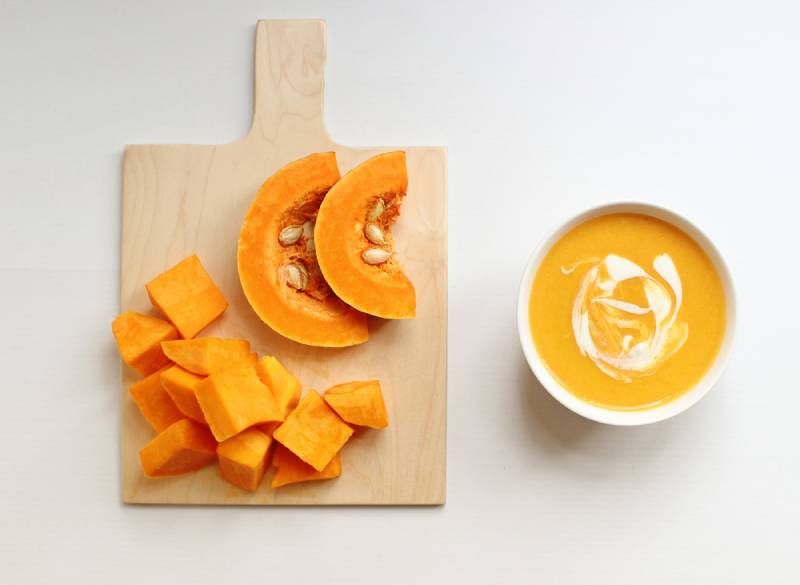
While there is a debate about whether or not the butternut squash counts as vegetable or fruit, the fact of the matter is that babies adore the sweet taste it provides, yours might not be any different.
Nevermind the amazing nutrients packed into them such as beta-carotene, Omega-3 fatty acids and vitamin C and B. Not to mention the healthy amounts of fiber and potassium as an alternative to bananas.
As with any other food on this list, the best way to prepare it is either to mash or puree it so that your little one doesn’t have to struggle with his food as all of his teeth may not have come out just yet.
Even if they have, he may not be used to them yet and it’s better to be safe than sorry.
Also, do note that you need to boil a butternut squash first to make the pureeing process easier as boiling it makes it a lot softer for easier consumption.
3. Cherry tomatoes
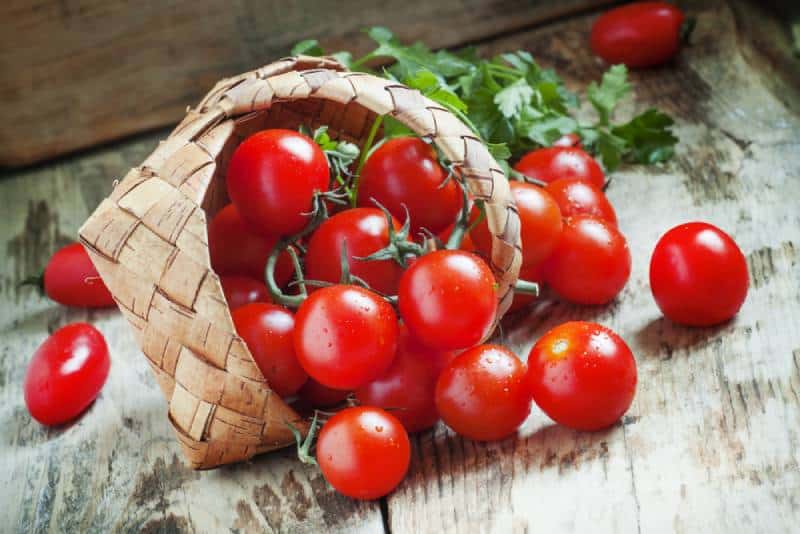
Something that may surprise some of you is the fact that tomatoes are indeed a fruit as well.
But, why are they good for your child? Well, that’s because tomatoes share similar nutrients to that of butternut squash and many other fruits, such as vitamin C and K, potassium and folates.
What makes tomatoes truly unique is the fact that they’re so rich in antioxidants, specifically lycopene which is believed to aid in cancer prevention and promote good cardiovascular health.
They’re mostly made up of water so simply removing the peel (as odd as it may sound) and mashing/pureeing them should do the trick. Though, I would recommend mixing it in with some greens to help with the flavor in case your kids don’t particularly enjoy it.
Do note that tomatoes can be a choking hazard and you should make sure it’s always prepared as a mash/puree in order to prevent any risks to your toddler.
4. Apples
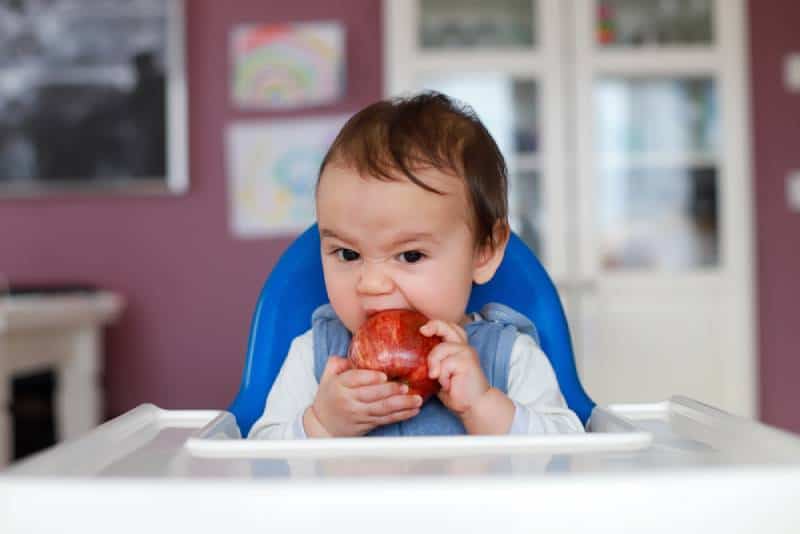
There’s a reason why the saying: An apple a day keeps the doctor away exists and that’s because apples are one of the most important fruits in any person’s diet.
They’re packed with fiber which promotes good digestion and helps your kid stay full for longer. This makes them less fussy since most of the time fussiness comes from digestion problems.
But, apples are also jam-packed with antioxidants which both help reduce the levels of cholesterol in the body and aid in diabetes prevention and treatment.
While not as relevant to children as it is an adult, it’s still an amazing addition to your child’s healthy dietary plan, if anything for its amazing taste and the fact that it’s a rather healthy snack.
Make sure to peel the apple and shred it or mush it up if you’re going to give it to your kids to eat. Giving them large chunks is still considered to be a choking hazard, one that you should definitely avoid!.
Alternatively, you can simply turn them into delicious fruit juice; I’m sure your kids won’t mind one bit.
5. Bananas

Bananas, while not my personal favorite, are one of the most amazing and healthy fruits for toddlers that you could possibly get.
That’s because you don’t have to do too much extra work to make them ready for your little one to consume.
They’re easy to carry around thanks to their shape, they’re naturally mushy and all you need to do is peel the outer layer, mush it around a bit and you’re done!
This works best if you use ripe bananas as they come pre-mushed and will be easier for your kids to eat.
The reason bananas are good health-wise is because they’re packed with carbohydrates as well as fiber, providing your child with an energy boost without any need for added sugar, all the while ensuring that his tummy is left healthy and undisturbed.
They’re also a healthy dose of potassium, which is a mineral that helps promote good digestive health and aids in regulating blood pressure as well as preventing heart disease.
As I’ve said, you can either serve them as they are or you can add them to yogurt or a smoothie for extra flavor.
6. Blueberries

From my least favorite fruit to my most favorite, blueberries are a delight for any person regardless of age.
Not only do they possess a heavenly taste, but they’re also low in natural sugar content, are packed with vitamin C, and are rich in fiber!
This means that they aid in promoting good digestion as well as good cardiovascular health.
But, research shows that they also help keep the body healthy by fighting off any disease that may affect one’s nerves and cognitive capabilities which makes blueberries a favorite among older folk who have these slight deteriorations already.
The best way to serve them is either to squeeze them into fresh juice for your toddler to drink, sprinkle them in yogurt, or, if you’re a bit more diligent, slice them in half so it’s easier for your child to eat them.
Do note that your child’s poop color may change if they consume too many, but I assure you that that’s only temporary and completely natural.
7. Raspberries

Much like their friend the blueberry, raspberries are yet another type of berry that your kids are sure to love, even if they’re picky eaters. The taste is just too good to resist.
But, it’s not just the taste that’s great, it’s the health benefits too. Chock full of antioxidants and ellagic acid as well as loads of fiber, raspberries help in cancer prevention and promote a good and healthy digestive tract.
And, much like the blueberry, the best way to serve them up is to either squeeze them into juice, serve them as they are (although, potentially sliced in two so your kids have smaller pieces to deal with), or add them as an extra bit of flavor to a yogurt or a smoothie.
8. Cantaloupes
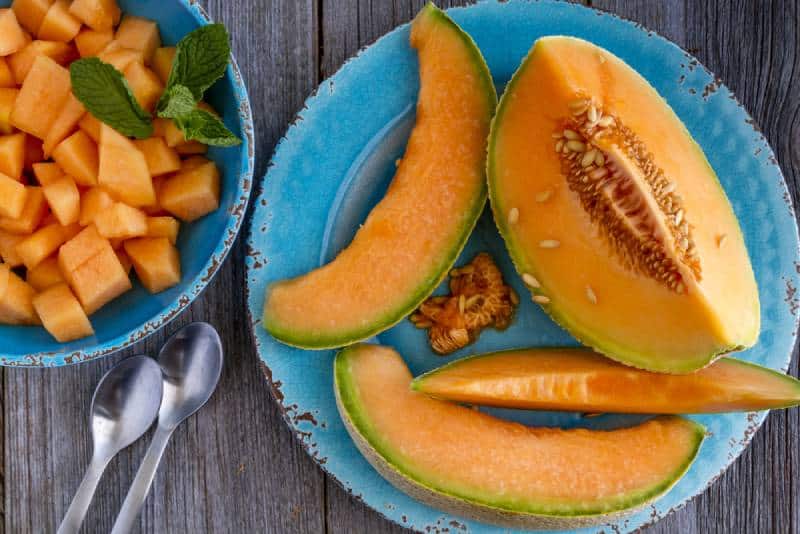
Another fruit that I am personally not a big fan of, but the health benefits of a cantaloupe can’t be ignored because of personal tastes.
They’re one of the best natural sources of vitamin A, and they also contain a healthy dose of vitamin C as well as potassium while still remaining a low-fat option for anyone looking for a healthier diet outside of just seeking to give their kids a good meal.
This means that cantaloupes are rather good at promoting good digestive health, much like all of the other potassium-rich fruits listed beforehand, as well as helping with any cardiovascular problems and aiding in the prevention of heart disease.
Plus, I will give the cantaloupe bonus points for the fact that its orange color is vibrant and eye-catching which helps attract your toddler’s attention and provides some encouragement to try something new and different.
If you can, try starting your child off on cantaloupes as one of their first solid foods to help make the transition easier.
The best way to serve it to kids is to either slice it up into very small pieces, shred it up, or puree it to avoid any potential choking hazards.
9. Apricots
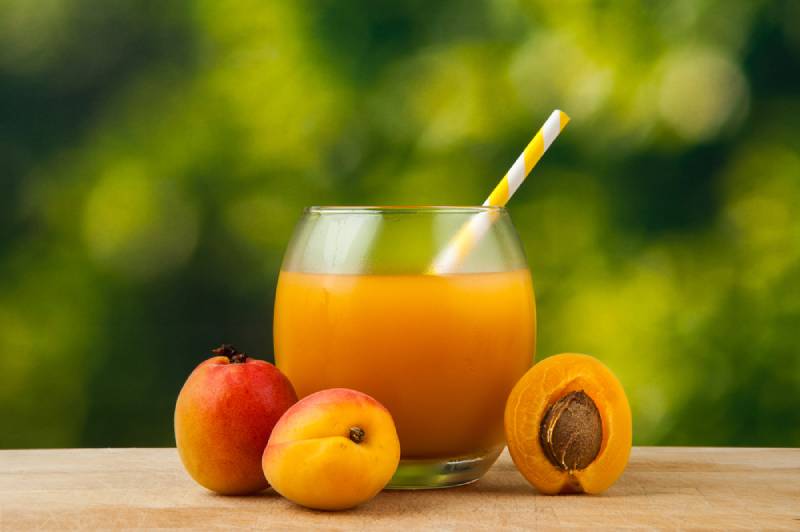
While not as common as apples, apricots tend to be the other go-to healthy snack for people who can get their hands on them.
And for good reason, they’re absolutely brimming with antioxidants and fiber as well as being packed with vitamin A, C and E. They are also a decent enough source of iron.
This means that apricots, again, much like every other fruit, help with promoting good digestive health, as well as proper skin health, maintaining sharp eyesight, and they help enrich the blood with iron for a healthier cardiovascular system in general.
While they’re naturally rather soft, try avoiding giving any that aren’t ripe enough for your kids. Look for ones that are at least a bit mushy or bruised as those will fare much better with them.
Do make sure to pull the seed out beforehand and I suggest that you still mash or puree them so that you can feed it to your kids as a paste to help them swallow easier while still getting all of that wonderfully sweet flavor.
10. Grapefruit and other citrus fruits

Whether they’re sweet or sour, citrus fruits are a great food that can be used anywhere from seasoning to delicious fruit juices to just straight-up food and they’re always delicious thanks to the varying levels of tanginess they carry.
Grapefruit, in particular, is one of the prime examples of this with a taste that’s both sweet and sour, an absolute party for the taste buds!
Not only is it packed with fiber and antioxidants, but it’s also a fruit that’s low in calories but high in nutrients. This is exactly what I have described as the most desirable form of solid foods, one where the whole fruit ends up having a use.
The antioxidants help in promoting cardiovascular health while the fiber provides various digestive benefits such as keeping your child sated for longer periods of time and rehydrating the body due to the high water content it has.
The best way to serve it, is to slice it up into small bits for your child to eat, or ideally squeeze it into juice so your toddler doesn’t have to struggle breaking through the skin between each slice and so you don’t have to do too much extra work in preparing it.
11. Zucchini

Yet another potential shocker, zucchini is actually botanically a fruit even though most of us think of it as a vegetable.
But, that label doesn’t matter now. What matters is that it’s one of the top fruits for toddlers and that’s because it’s rich in vitamin A and C, and it contains healthy doses of potassium and manganese.
It’s also quite full of antioxidants and fiber, an essential requirement to qualify as a good fruit for toddlers.
As such, it ends up being extremely beneficial for digestive and cardiovascular health as well as potentially aiding in improving vision.
Despite being high in water content, the best way to prepare zucchini for your kids is to mash or puree them and then serve it, much like many other forms of baby food.
12. Kiwi fruit

Finally, we have kiwi fruit. Kiwis are a prime example of good things coming in small packages. While its exterior leaves much to be desired, once that’s peeled away it reveals the captivating green color and the beauty of its insides.
Kiwis house such a specific mix of sweet and tangy that it’s always a treat when one gets to eat them which makes them one of the best meals for picky toddlers.
But, as with many of the other fruit mentioned, it’s not just the visual appeal alone that carries it, the kiwi fruit houses many added health benefits that make it an ideal addition to your child’s new solid food dietary plan.
Not only do they have the antioxidant and fiber package that nearly every fruit has which is never a bad thing, but they’re also a triple vitamin threat of vitamin C, E and K. They also have a healthy dose of potassium and folates.
They essentially have a combination of almost everything that each of the previously mentioned fruits have.
This means that they promote both digestive and cardiovascular health, but, research shows that their high concentration of vitamin C and antioxidants is also said to help treat asthma.
The best way of serving it is to slice it up into small bits and feed it to your baby. All of it is edible so you don’t have to worry if you leave a bit of the outer layer on.
That being said, there is another, rather innovative way of feeding kiwi to your kids that I found online and that is to turn it into a sort of ice cream, or popsicle rather.
Simply slice and mash the kiwis into a light paste alongside any other fruits you think will make a great combo and put it into a mold. Then put a wooden popsicle stick inside it and put it in the freezer to set.
Once done, you can pull them out and your child will have a tasty treat that he can enjoy and keep cool with on a hot summer’s day while still getting all the necessary nutrients.
13. Watermelons

Ah, watermelon. Summer’s most delectable treat thanks to it’s sweet, sweet flavor.
Full of vitamin C and A and containing a healthy amount of beta-carotene and lycopene, watermelon helps with providing a cool and refreshing boost to one’s day while helping promote good digestion, relieving stress, and improving one’s heart health.
The other benefit, that’s more for you than anything else, is the fact that a watermelon is almost entirely made out of water which makes it simply melt in one’s mouth.
That means that, outside of clearing out the seeds, you don’t have to do much to prepare it for your child. Just give them a slice to nibble/suckle on and they’ll be happy as a clam.
Vegetables For Toddlers
As good as fruits are, veggies are also an integral part of every person’s diet and children are no exception.
For interest purposes and to introduce a more diverse range of foods into your kid’s diet, it’s best to start him off early by offering him stuff he may not want to try later on.
This way you get to surprise him with a new food that may actually end up becoming his new favorite. You’d be surprised just how many kids actually like broccoli for instance.
1. Green beans
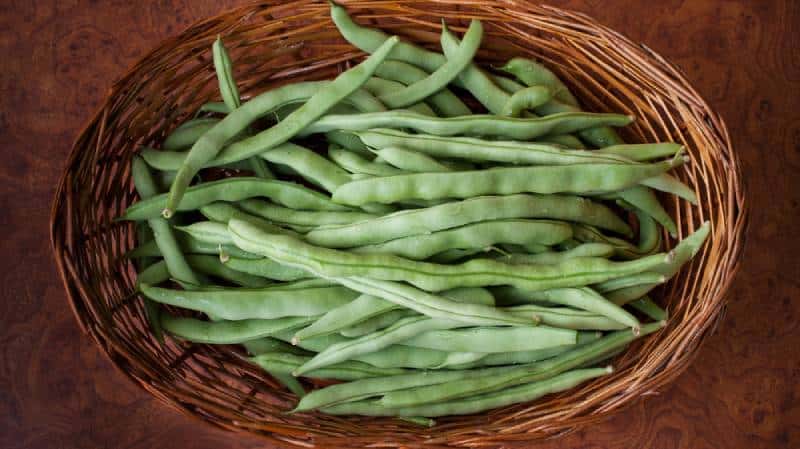
Green beans are the vegetable form of superfood when it comes to kids and adults alike.
Not only do they have good amounts of iron, calcium and vitamin C and K, they also come with loads of fiber and folates as well as silicon, and not the kind that makes microchips.
This silicon improves the strength of our bones and the quality of our skin and hair.
Green beans are rather crunchy in their natural state which means that the best way to prepare them for your kids is to steam them or puree them. If you go with the former, you get to keep a bit of that crunch, but I’m sure either form will suit your child rather well.
But, as with apples and cherry tomatoes, do be careful about giving your kids bits that are too large as they pose a very serious choking hazard, one you should be aware of and remove if you can.
2. Sweet potatoes
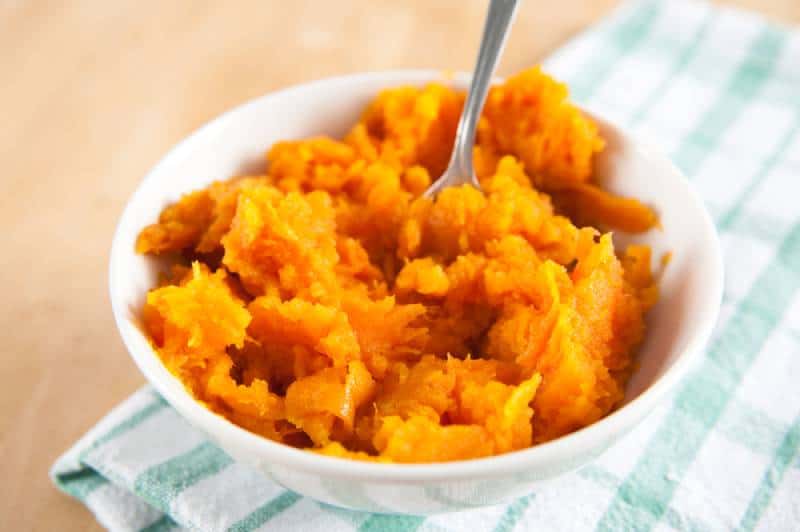
Despite being a vegetable, sweet potatoes are favored by many kids purely for the fact that they have a rather distinct sweet taste that appeals to a child’s early palate and it is a perfect solid food to introduce early to them.
They contain lots of vitamin C as well as potassium, fiber, and several antioxidants meaning they’re good for both digestion, and for promoting healthier veins while also serving as good cancer prevention.
The best way to serve them to your growing child is to mash or puree them much like you would with a regular potato. It’ll go by much smoother than many other fruits and vegetables. Do make sure to cook it first though.
RELATED: How To Get Toddlers To Eat Vegetables In 9 Easy Steps
A Note: Meats And Grain Are Important Too
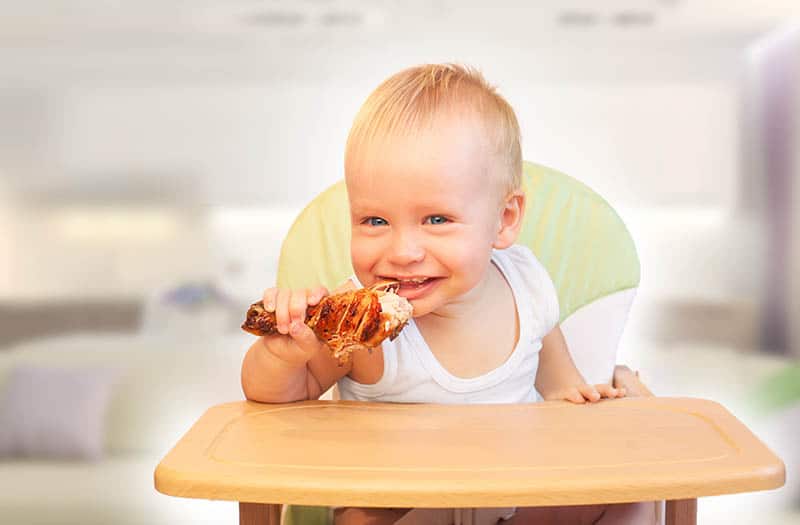
While fruits and veggies are always great to eat, a healthy diet involves a mix of all the basic food groups and that means meat and grains too.
With grains you’ll want to stick to oats and rice, preferably brown rice but others work just as well.
As for meats, all meats are okay to consume, so red meat, fish and chicken are all on the menu, although I’d stick to smaller quantities at first.
Also, make sure to mash it up into a nice paste so your child can eat it without having to deal with the tougher meats and sprinkle in a mix of vegetables here and there to spice up the flavor and add those extra nutrients.
How To Transition Your Child From Breast Milk To Solid Foods

While all of the listed foods may be amazing additions to help expand your little one’s diet, he may not be on board at first.
That’s because kids get too used to their mother’s breast and then don’t want to wean off from it.
Some kids do wean off breast milk pretty easily, but with others, you may not be as fortunate. If that’s the case then you may want to try mixing some breast milk with mashed up solids to help make the transitioning period easier for your child.
Gradually reduce the amount of breast milk that you mix with the food over the course of the next month or two until you completely remove it and you’ll see that your tiny toddler will have no issues eating the food you give him now and may have even forgotten about the breast.
In Conclusion
Vegetables and fruits for toddlers are easy to find and prepare, all it takes is to turn them into a fine puree or mix them into a healthy smoothie.
The main thing you want to look for in a useful solid food to feed your child is plenty of fiber and antioxidants as well as any helpful vitamins to help keep your child healthy and help him grow up properly.
Do note that not everything you try feeding your child will fly well with them. It’s all about trial and error that’s why many of these foods have similar benefits.
Find the ones that your child loves eating and, most importantly, ones he isn’t allergic to and stick to those while testing out other potential new foods to add into the mix and expand your toddler’s palate.
READ NEXT: Vegetables And Fruit In Season By Month: When To Buy What
Like this post? Please share or pin it for later. You can also stay in the loop and follow us on Facebook, Instagram or Pinterest.

This post contains affiliate links. Please see our full disclosure for more info.

